[vc_row][vc_column][vc_column_text]Has your humidifier been sitting quietly at home for months with no issues?
It cleans the air, keeps allergies at bay, and keeps you hydrated. What more could you want? However, have you ever noticed a thin layer of mucus forming on your humidifier? You may have noticed it on the sides and bottom of your water tank. This slime changes color; before you know it, pink is coming from the humidifier. It’s known as “pink mold.” Fortunately, pink mold in humidifiers is common and simple to remove. Let’s look at what pink mould is, how it forms, and how to remove it.
Table of Contents
ToggleWhat Is Pink Mold?
Serratia marcescens, sometimes known as pink mold, is a kind of bacteria that can appear pink or reddish. Despite its name, it is a bacteria rather than mold. Humidifiers are a great breeding site because they thrive in moist and warm surroundings.
Pink mold can accumulate in many sections of the humidifier, including the water tank, filter, and other internal components, if left unchecked. It not only emits an unpleasant odor but can also degrade your home’s air quality.
What Causes My Humidifier to Turn Pink?
Mold comes in various colors: black, green, pink, red, orange, and purple. Pink molds, for example, are frequently found in humidifiers. This is a type of waterborne bacterium found primarily in pink. Pink mold can be classified into three types.
Serratia Marcescens:
This mold isn’t a mold! Bacteria grow in bathrooms near showers, sinks, and toilets. It feeds on shampoo and soap residue, so the bathroom is an ideal environment for it. Pullulans, Aureobasidium: A. pullulans, common in restrooms, can grow on organic matter such as wood and plants. It starts yellow or white and gradually turns pink.
Fusarium:
These molds are attracted to plants and rarely infiltrate homes. If you’re wondering which of these pink molds infest your humidifier, A. Pullulan is most likely the culprit. Be not surprised. They are not as frightening as they appear! On the other hand, prolonged exposure can be harmful, so remove them as soon as possible.
Regarding how these pink molds form, don’t worry about your cleaning habits or housekeeping abilities. In most cases, there isn’t much you can do to avoid it. Humidifiers work by spraying distilled water into the air from a storage tank. Mold and bacteria thrive in damp, dark places, so a humidifier’s water reservoir tank can quickly become a favorite.
Also, check: Dehumidifier Blowing Hot Air? Here’s What to Do.
| Image | Product | Features | Price |
|
Best Seller
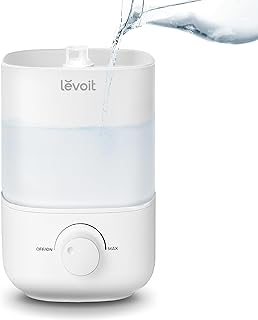
|
ASAKUKI 500ml Premium, Essential Oil |
Polypropylene diffuser with remote control, ultra-quiet fan, 5-in-1 functionality. |
$31.59
|
|
Best Seller
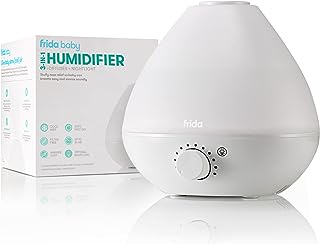
|
Frida Baby 3-in-1 Cool Mist Humidifier for Baby with Diffuser |
Versatile 3-in-1 baby humidifier, diffuser, and nightlight with color-changing feature. |
$31.59
|
|
Best Seller
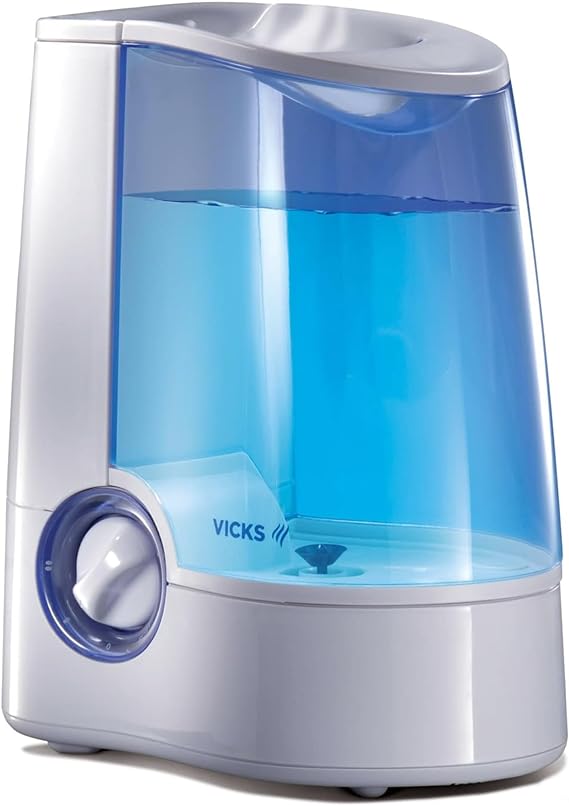
|
Vicks Warm Mist Humidifier Small to Large Room Vaporizer |
Vicks portable humidifiers: easy to use, warm mist, quiet operation. |
$39.99
|
|
Best Seller
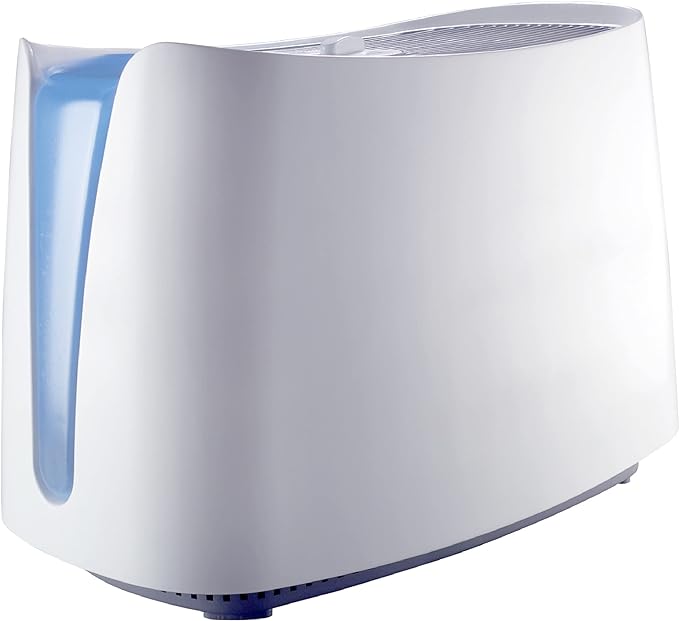
|
Product Honeywell Cool Moisture Humidifier, Medium Roomame |
Honeywell Cool Moisture Humidifier: cleaner mist, everyday comfort, easy-to-use, bedroom-friendly. |
$79.99
|
|
Best Seller
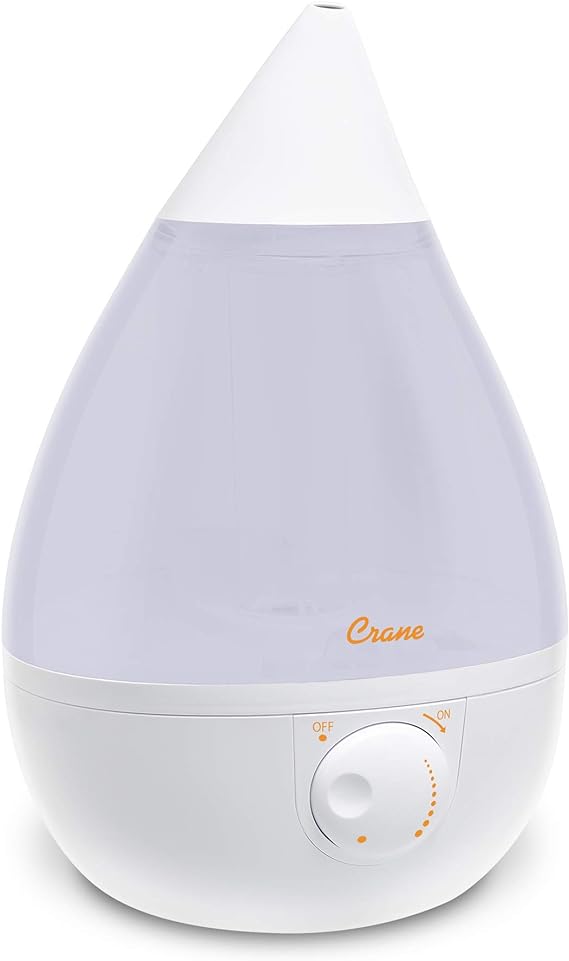
|
ProduCrane Ultrasonic Cool Mist Humidifierct Name |
Crane Drop Ultrasonic Humidifier: large capacity, adjustable, soothes allergies, automatic shutdown. |
$39.86
|
Is Pink Mold In Humidifier Harmful?
Pink mold isn’t directly threatening your home but can still harm your health. These molds can cause respiratory, urinary, and gastrointestinal infections with prolonged exposure. People with a respiratory disease history are more likely to develop complications.
- Humidifier-generated pullulan can build up in your home for weeks before you notice it. Prolonged contact with this pink mold can result in hypersensitivity pneumonitis, also known as “humidifier lung.” Coughing, difficulty breathing, and fever are all symptoms of this condition.
- Lung inflammation makes breathing difficult and leaves permanent scars on the lungs. So, if someone in your household becomes ill and develops a fever or flu-like symptoms, it’s time to clean that filthy humidifier!
How Do I Get Pink Mold Out of My Humidifier?
Pink mold can be easily removed if you are healthy and show no signs of pneumonia. Before cleaning, make the necessary preparations. Wear safety goggles, gloves, and an N-95 mask to avoid irritation.
If you have respiratory disease, however, we recommend seeing a doctor.
Pink mold can be removed from your humidifier by following simple steps.
- Remove the humidifier’s tank from the base and unplug it from the outlet.
- You must now select a cleaner for your tank. Fill your water tank with vinegar or hydrogen peroxide, or use a bleach solution.
- Leave the liquid in the humidifier tank for about 30 minutes to melt the mold and make removing it easier.
- After 30 minutes, drain and rinse the tank with lukewarm water.
- Allow it to dry completely before cleaning the humidifier base with a peroxide/vinegar solution mixed with water.
- Apply the solution and gently scrub away any pink deposits using a sponge or cleaning cloth.
- Finally, clean water should be wiped over the surface.
How to Prevent Pink Mold in Your Humidifier
Here are some easy ways to prevent pink mold.
Fill The Water Tank Once a Day.
One of the most common humidifier guidelines is to refill the water tank with clean water daily and not leave it for too long.
Maintain The Humidifier.
Rinse your humidifier with hot water and vinegar weekly to keep it clean. Chemical cleaning agents should not be used regularly because they harm the machine. To ensure no excessive buildup, dry the humidifier with a clean towel or allow it to air dry.
Apply Disinfectant
Add a strong cleaning agent to your humidifier to prevent pink mold growth. Humidifier tablets are available to prevent mold and scale formation inside the humidifier.
Avoid Stagnant Water
Allowing water to lie stagnant in the humidifier for an extended period is not recommended. When not in use, always empty and dry the water tank to prevent the growth of bacteria or mold.
Use Distilled Water
Pink mold growth can be considerably reduced by using distilled water in your humidifier. Distilled water is free of minerals and contaminants that can promote bacterial growth, so it will keep your humidifier cleaner longer.
Replace Filters Regularly
If your Humidifier Contains A Filter, replace it according to the manufacturer’s instructions. A filthy or clogged filter can harbor mold and germs, damaging the humidifier’s air quality.
Tea Tree Oil Should be Added.
A few drops of tea tree oil, a natural antiseptic, in your humidifier, can prevent pink mold growth and act as a breathing aid for those suffering from respiratory issues. One advantage is that it will not harm your machine like other cleaning products, such as bleach.
Also check: Why Is My Furnace So Loud And How Do I Fix It?
Conclusion:
Pink mold is commonly found in humidifiers. Even if it appears intimidating at first glance, it is easily removed by cleaning the humidifier regularly.
Filling the humidifier with fresh, warm water and regularly inspecting the inside can help prevent mold growth. We recommend using distilled water because it has low bacterial growth potential.
Remember that pink mold can make you sick if left unattended for an extended period, so take immediate action if you notice anything pink. Better catch the bad guys before they infiltrate your home!
FAQs
What can I add to the water in my humidifier to keep it clean?
Disassemble and separate the humidifier. Fill the tank as usual, but this time, add two tablespoons of distilled white vinegar. Allow this mixture to sit for 30 minutes in the tank. Drain the water by placing the tank over the reservoir.
What can I put in my humidifier to keep bacteria at bay?
Here are some tips for keeping your humidifier running and preventing bacterial growth.
- Make use of distilled or demineralized water.
- Change the water regularly.
- Keep the area around the humidifier dry.
- Regularly change the Filters in your central air conditioning and heating systems.
- Keep the humidifier clean regularly.
Is pink mold in your humidifier dangerous?
Touching pink mold will not make you sick right away. However, if you have open wounds or skin infections on your hands, you should avoid doing so. Wear gloves when cleaning a humidifier with pink mold to avoid contact with the spores.
What is the source of the pink residue in the humidifier?
If you notice pink mold growing on the water tank or other parts of your humidifier, A. pullulans are most likely to blame. Although this mold is relatively harmless, long-term exposure can have negative consequences. (For example, prolonged use of an improperly cleaned humidifier).





















